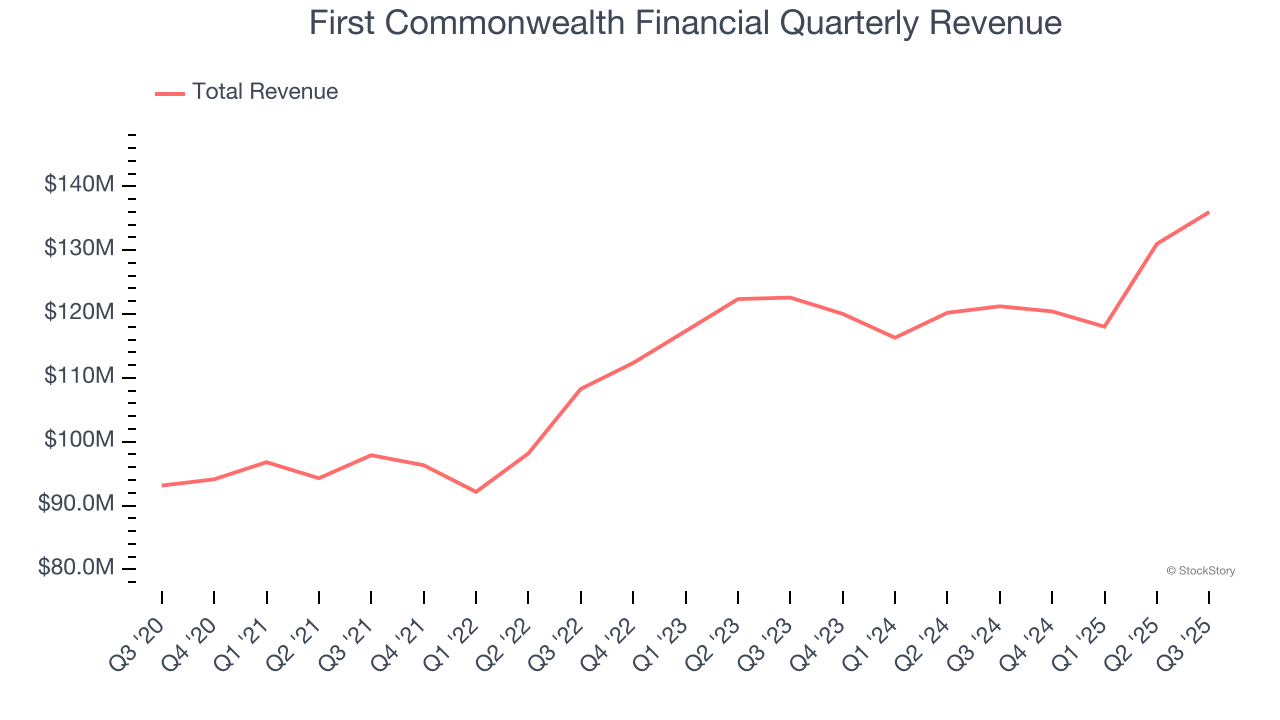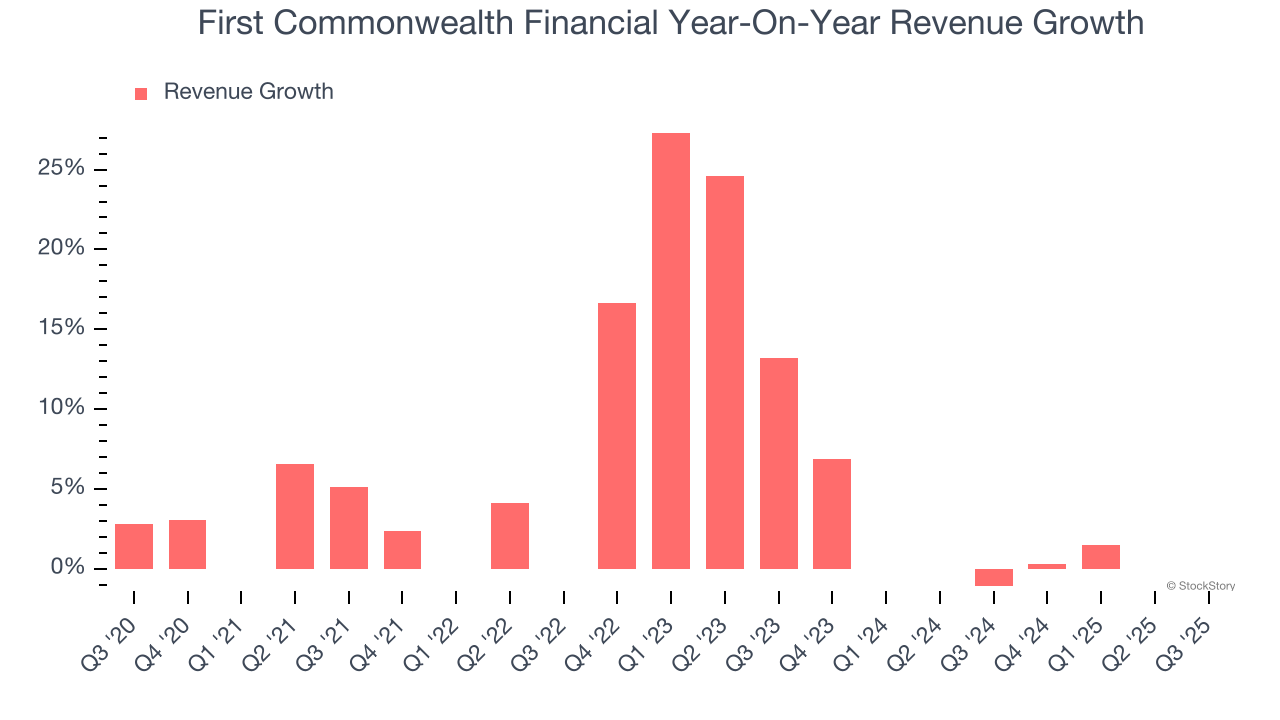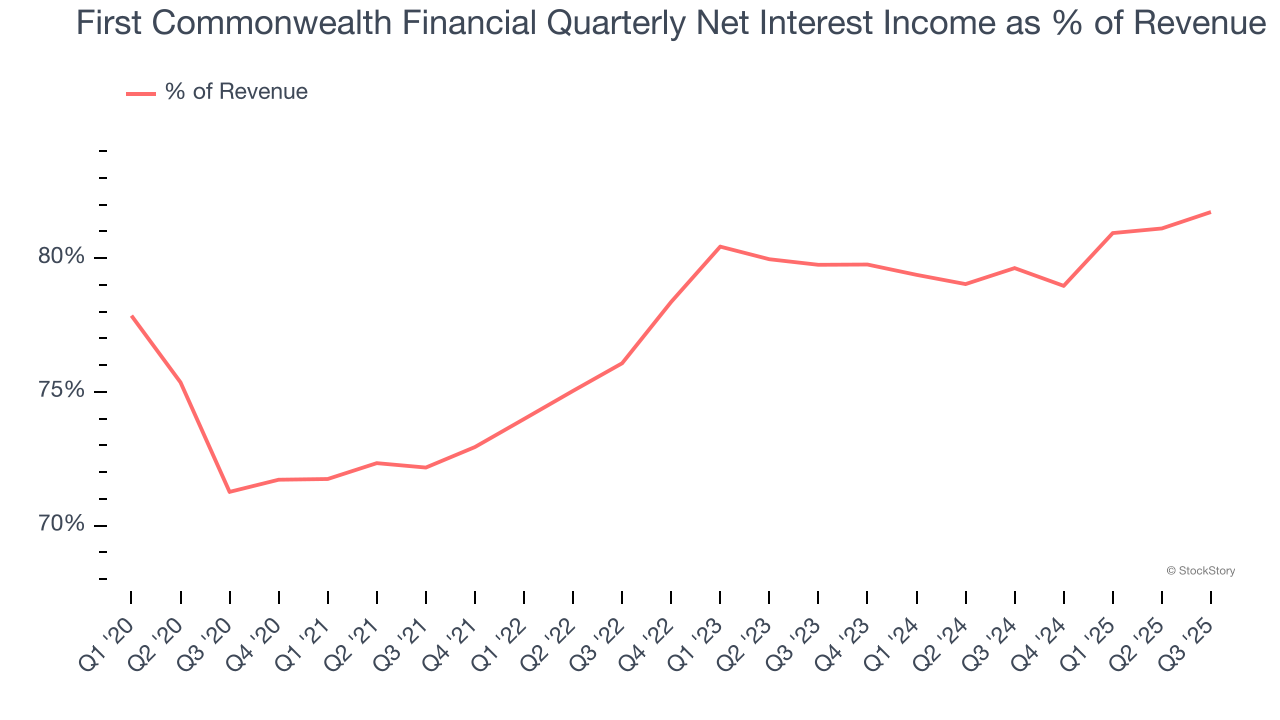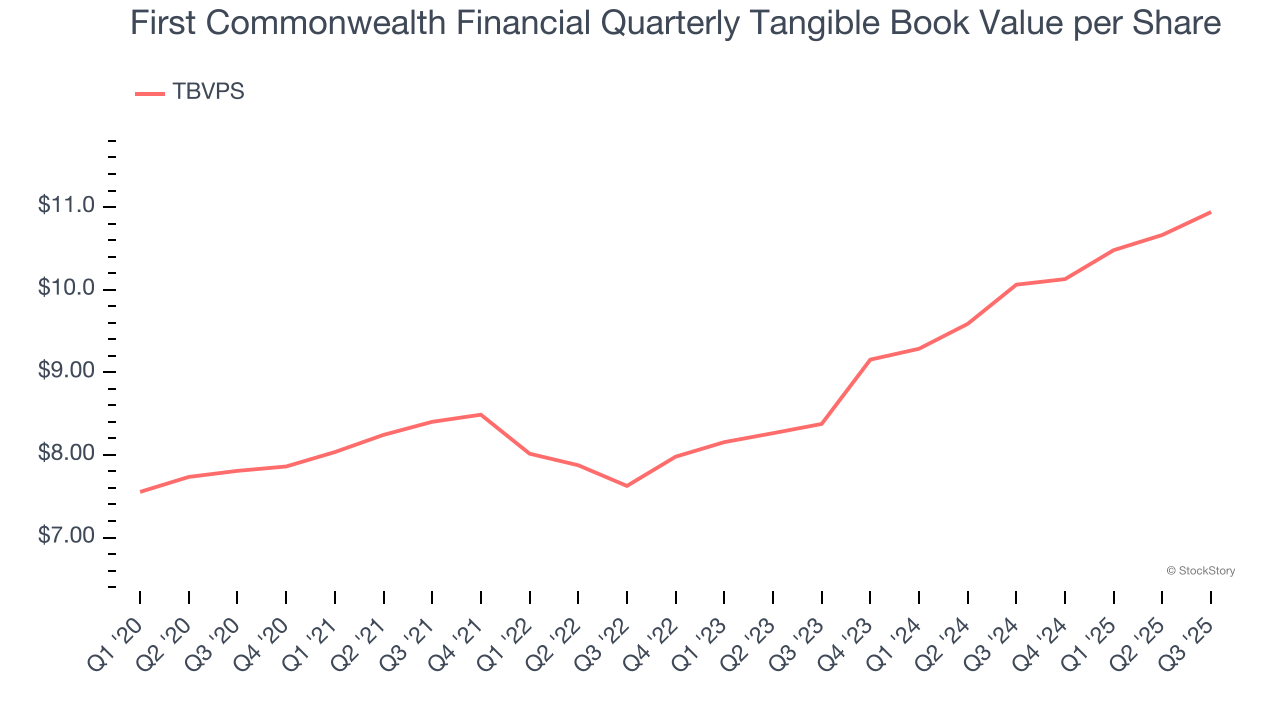
Regional banking company First Commonwealth Financial (NYSE:FCF) met Wall Street’s revenue expectations in Q3 CY2025, with sales up 12.2% year on year to $136 million. Its non-GAAP profit of $0.39 per share was 4.9% below analysts’ consensus estimates.
Is now the time to buy First Commonwealth Financial? Find out by accessing our full research report, it’s free for active Edge members.
First Commonwealth Financial (FCF) Q3 CY2025 Highlights:
- Net Interest Income: $111.1 million vs analyst estimates of $111.8 million (15.1% year-on-year growth, 0.6% miss)
- Net Interest Margin: 3.9% vs analyst estimates of 3.9% (3 basis point beat)
- Revenue: $136 million vs analyst estimates of $135.9 million (12.2% year-on-year growth, in line)
- Efficiency Ratio: 52.3% vs analyst estimates of 53.7% (142 basis point beat)
- Adjusted EPS: $0.39 vs analyst expectations of $0.41 (4.9% miss)
- Tangible Book Value per Share: $10.94 vs analyst estimates of $10.99 (8.7% year-on-year growth, in line)
- Market Capitalization: $1.70 billion
“Our third quarter results reflect continued momentum across our core banking operations,” stated T. Michael Price, President and Chief Executive Officer.
Company Overview
Tracing its roots back to the Great Depression era of 1934, First Commonwealth Financial (NYSE:FCF) is a financial holding company that provides consumer and commercial banking, wealth management, and insurance services across Pennsylvania and Ohio.
Sales Growth
Net interest income and and fee-based revenue are the two pillars supporting bank earnings. The former captures profit from the gap between lending rates and deposit costs, while the latter encompasses charges for banking services, credit products, wealth management, and trading activities. Over the last five years, First Commonwealth Financial grew its revenue at a solid 7% compounded annual growth rate. Its growth surpassed the average banking company and shows its offerings resonate with customers, a great starting point for our analysis.

Long-term growth is the most important, but within financials, a half-decade historical view may miss recent interest rate changes and market returns. First Commonwealth Financial’s recent performance shows its demand has slowed as its annualized revenue growth of 3.2% over the last two years was below its five-year trend.  Note: Quarters not shown were determined to be outliers, impacted by outsized investment gains/losses that are not indicative of the recurring fundamentals of the business.
Note: Quarters not shown were determined to be outliers, impacted by outsized investment gains/losses that are not indicative of the recurring fundamentals of the business.
This quarter, First Commonwealth Financial’s year-on-year revenue growth was 12.2%, and its $136 million of revenue was in line with Wall Street’s estimates.
Net interest income made up 77.2% of the company’s total revenue during the last five years, meaning lending operations are First Commonwealth Financial’s largest source of revenue.

While banks generate revenue from multiple sources, investors view net interest income as the cornerstone - its predictable, recurring characteristics stand in sharp contrast to the volatility of non-interest income.
Here at StockStory, we certainly understand the potential of thematic investing. Diverse winners from Microsoft (MSFT) to Alphabet (GOOG), Coca-Cola (KO) to Monster Beverage (MNST) could all have been identified as promising growth stories with a megatrend driving the growth. So, in that spirit, we’ve identified a relatively under-the-radar profitable growth stock benefiting from the rise of AI, available to you FREE via this link.
Tangible Book Value Per Share (TBVPS)
Banks profit by intermediating between depositors and borrowers, making them fundamentally balance sheet-driven enterprises. Market participants emphasize balance sheet quality and sustained book value growth when evaluating these institutions.
Because of this, tangible book value per share (TBVPS) emerges as the critical performance benchmark. By excluding intangible assets with uncertain liquidation values, this metric captures real, liquid net worth per share. Other (and more commonly known) per-share metrics like EPS can sometimes be murky due to M&A or accounting rules allowing for loan losses to be spread out.
First Commonwealth Financial’s TBVPS grew at a solid 7% annual clip over the last five years. TBVPS growth has also accelerated recently, growing by 14.3% annually over the last two years from $8.38 to $10.94 per share.

Over the next 12 months, Consensus estimates call for First Commonwealth Financial’s TBVPS to grow by 11.9% to $12.24, top-notch growth rate.
Key Takeaways from First Commonwealth Financial’s Q3 Results
We struggled to find many positives in these results. Its EPS missed and its net interest income fell slightly short of Wall Street’s estimates. Overall, this was a weaker quarter. The stock traded down 2.2% to $16.05 immediately after reporting.
First Commonwealth Financial didn’t show it’s best hand this quarter, but does that create an opportunity to buy the stock right now? When making that decision, it’s important to consider its valuation, business qualities, as well as what has happened in the latest quarter. We cover that in our actionable full research report which you can read here, it’s free for active Edge members.
